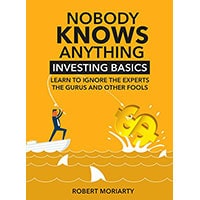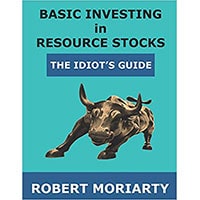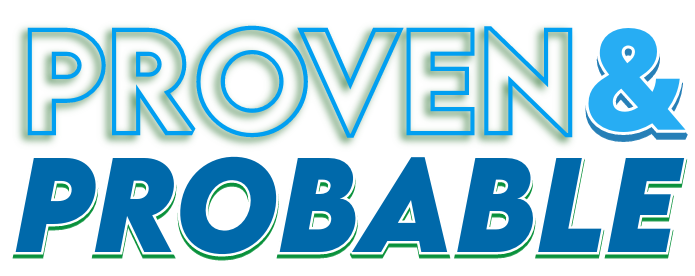Maurice J.: Joining us for a conversation is Kevin Vecmanis, the founder of
VanAurum Financial Technologies. Mr. Vecmanis, welcome to the show, sir.
Kevin V.: Hello, Maurice. It’s great to be here. Thanks a lot.
Maurice J.: Glad to have you back on the program. In our last
interview, we addressed the value proposition for the next capital vortex. Today, we will address central banks unwinding their balance sheets, and the duplicitous effects that may occur. And what actions you, the investor, may take to prepare yourself.
But before we begin, Kevin, your company uses a unique skill set that I find intriguing, which is artificial intelligence for investing. For our first time listeners, please introduce us to VanAurum Financial Technologies.
Kevin V.: VanAurum is an intelligent lead generator for trading opportunities. That’s probably the best way to summarize it. We use machine learning techniques to detect anomalies, and unusual market behavior and then we report on it to members on a daily basis.
Our platform attracts a global cross-section of sectors, ratios and economic data points. And then when something occurs that has some kind of historical precedent for being either positive or negative for forward returns, VanAurum will report on it to members.
We believe that by having an intelligent filter that’s hand-picking market events to look at, it frees up our members’ time to focus their efforts on more productive means, such as, constructing trading strategies and or analysis on their own. So if someone uses a charting service, or trades on technical analysis, VanAurum’s definitely worthy of membership consideration.
Maurice J.: Kevin, your research has noted a mega trend occurring that is related to central banks unwinding their balance sheets. Beginning at the 10,000-foot level, can you share with us why central banks are unwinding their balance sheets, and what this means for investors?
Kevin V.: Stepping back for a moment, in 2009, the Federal Reserve came up with an explicit program called Quantitative Easing, to buy mortgage-backed securities and other debt-related securities from the balance sheets of different institutions, and most central banks globally eventually caught on to this well, to bail out financial institutions in the sector that were carrying this “toxic debt” on their balance sheets.
The Fed conversely grew its balance sheet from about $800 billion to almost $4.5 trillion. And it was maintaining it at that level for a while. When the Fed is maintaining the size of its balance sheet with these debt-related securities what its intentions are as follows: as the securities mature on its balance sheet, it is actively seeking out other similar securities to buy to replace them, so that the Fed can keep the size of its balance sheet at a constant level.
So, the process of expanding the balance sheet, as well as maintaining it at a certain level, there was an implicit assumption in the market that the central bank was going to be there, and be a significant source of debt demand for a lot of these securities, which would be the primary driver behind interest rates ultimately hitting rock-bottom yields. The Fed was such a heavy influence on interest rates that, in January of 2018, the yield on the S&P 500 was about 1.73%. And the yield on the three-month Treasuries, which is considered to be the United States’ riskless asset, was higher than that.
The end result is that the S&P equity yields, which are considered to be risky assets on somebody’s balance sheet, or within their portfolio, these yields are essentially risk-free. Which is a really amazing thing if you think about it. A situation that is really unsustainable.
Going forward, the Fed has now communicated that it is going to shrink the size of its balance sheet. So in effect what that’s actually doing is removing a major source of demand out the market, for not only U.S. Treasuries, but other mortgage-backed securities as well. This is a simple supply and demand factor. The likelihood of supply and demand to equalize will not be accomplished until rates are much higher.
Maurice J.: I always find it disingenuous that the U.S. Treasury references the nominal rate of return and omits the real rate of return on Treasuries.
Twofold question here for you. How will this impact currencies and capital markets?
Kevin V.: We have witnessed the Fed go through hiking cycles in the past, typically any kind of economic turmoil that led to a flight to safe haven assets increased the demand for Treasuries and the U.S. dollar.
I am of the opinion that the Federal Reserve is in a bit of a tricky situation right now. And over time, more and more investors are going to actually start picking up on this. In a historical context, the level to which they’ve actually raised interest rates is not really that high. What is unprecedented is the extended period of time that the Fed has pinned along interest rates to zero. The Fed recognizes that it needs to raise rates because it has artificially suppressed interest rates, which were driving the yields on the S&P and of bonds respectively to disproportionate levels.
Should the market witness again that the Federal Reserve is willing to reverse course, by printing currency (inflation) to buy up a lot of assets and thus further expand its balance sheet again, I believe the market will react violently to the Fed’s attempts. I think this time around, the impact could actually be very negative on the U.S. dollar and Western currencies as investors will begin to realize maybe how unsustainable some of the debt trajectories actually are.
Maurice J.: If currencies and equities will be negatively impacted, what is the prudent investment decision that one should make now?
Kevin V.: In this situation, I like to look at what were the major beneficiaries within the broad markets when the Federal Reserve decided to embark down this path of explicit balance sheet expansion. And I guess the answer to that is bonds, equities, and to a large extent, real estate within major urban centers. So we’ve seen significant inflation in a lot of these markets. They were the major beneficiaries of what I call the risk premium compression that resulted from the Fed artificially lowering interest rates.
After the crisis everybody thought that commodities and other markets like that were going to go hyperbolic. But we actually didn’t see that. And, in my opinion, a lot of the reason why we didn’t see that was because the market was front running all these explicit purchases from the central bank. Why wouldn’t you buy bonds if you knew that the Federal Reserve was going to be buying, $30, $40 billion of them a month, on an open-ended basis.
So I think that drew a lot of capital away from resource sector stocks, from commodities. Any commodity, really. And so I think this time around, when we see this whole process unwinding, to me it only seems logical that the markets that were previous beneficiaries might suffer. Conversely, the markets that didn’t benefit we will start to see a lot of those begin to mean revert. I foresee big potential in platinum, gold, resource sector stocks and energy stocks, which have been punished to a significant degree, especially within the explorers and the producers, which experienced some of the sharpest declines in record.
So, I think it all depends on how the market decides to react with the U.S. dollar. Whatever it is, we get the next major trajectory change from the Federal Reserve. But my inkling, my instincts right now, and all the data that I look at with VanAurum and our research, suggests that the U.S. dollar will probably be negatively impacted the next time around.
Maurice J.: So then the answer will be, if I’m correct here, would physical gold be the first prudent investment decision?
Kevin V.: Yes, definitely at this point. I always advocate having some allocation to gold in your portfolio, especially right now with the debt-based currencies in the West really starting to balloon out of control. But there’s lots of fear in the market right now. We’ve experienced a significant correction on the S&P 500 and the broad equities. A lot of the valuation extremes that we saw leading up to this point was causing everybody to warn of bubbles. We’ve actually seen a fair amount of that lead off. And it’s come back into nominal territories.
I sent a message out to my members earlier this week saying that at this juncture, if the correction in the S&P 500 extends into bear market territory, closer to it being down 20%, which at that point, going back to 1980 within our data that VanAurum analyzes, most of the precedence, if not all of them, are actually positive for one-year returns going forward once the market has experienced a selloff greater than 20%.
So there could be draw downs in the broad equity market from here. In September 2008, the market ultimately fell 40% before hitting its ultimate bottom. And then exactly one year later, from September 2008, the market was almost unchanged again. So, could the market accelerate to the downside again, and resume a bear market? It’s likely. But at this point, I think prudent investors will start trying to anticipate some type of accumulation program for broad equities.
I have my attention on what I would term as the kind of the forgotten markets right now, like gold, which is carving out a multi-year base; platinum, which has been absolutely crushed recently; and silver are going to do extremely well in the environment that we’re about to move into.
Maurice J.: Regarding physical precious metals, would precious metal equities be the right place to be as well, once someone has secured a position first in the physical metals?
Kevin V.: Yes, full disclosure, I have long positions in GDX and GDXJ. With VanAurum, and my research, I study sectors. There are lots of people who are really good at picking individual issues. But when we’re working with our machine learning system, for reasons that maybe are beyond the subject of this interview, we try to stick with a sector. So, I do have exposure to the gold mining equities, through GDX and GDXJ.
Depending on what the investors are looking for, royalty companies and the gold streaming companies really tend to do well during downside turmoil in gold and equity markets. We saw companies like Franco-Nevada, whose stock performed incredibly well during the gold bear market from 2011 to 2015. Where you really get your upside leverage, in the gold mining and the resource space, is when you’re dealing with an issuer whose cost of production is really close to the prevailing gold price.
What happens there is you get profit leverage. So, if you have a gold mining company that’s selling gold for $1,200 an ounce, and say its all-in cost to produce that ounce of gold are $1,199. So it’s making $1 of profit. If the price of gold increases by a dollar, then the earnings for that particular company increased by 100%. So you go from $1 to $2, you double your earnings. And so that’s what we mean by profit leverage.
You start to see a lot of the high-cost companies really start to accelerate when you see gold moving into a particularly strong bull market. I think what’s happening right now is you’re seeing a lot of the accumulation, and a lot of the higher quality issuers, and they’ve been doing well for quite some time.
But the sectors like GDX and GDXJ, I think have been languishing partly because they’re full of lots of producers that a lot of them haven’t been particularly well in this environment. But I think that will change if gold can stage a major breakout. I think you’ll see a bid under, pretty much any company that’s producing gold. And stage a breakout, and sustain it above $1,400 US.
Maurice J.: Switching gears, Mr. Vecmanis, what is the next unanswered question that VanAurum Technologies is researching? And when do you believe we will have an answer?
Kevin V.: Right now, to me the elephant in the room are interest rates, and how the market is fully going to react to the Federal Reserve removing itself as a major demand source in the debt markets. So, it seems to me like there’s a little bit of disbelief. You’re starting to see two-year Treasury yields, which is a fairly close proxy for interest rate hike expectations, you’ve seen a lot of those rates come down recently. Some of that might have been because the yields were overbought. And the bonds were due for a rally.
But to me that really is the biggest question, because the Federal Reserve was such a huge component of this equity rally that we had from 2009 until now. And I think whatever its action will be is going to be a major component of how the market plays out going forward. You can see the market starting to begin to call its bluff. But what I’m really interested in finding out is what the Federal Reserve actually intends to do. If the markets truly start to react violently to the rate hike cycle, it is going to end it? And is the Fed going to start to ease again, meaning increasing the size of its balance sheet. Or is it going to start cutting rates?
I think if the Fed starts cutting rates, having only reached the levels that they’re at, I think that’s going to be a really, really scary warning sign to market participants everywhere that the U.S. economy just can’t handle higher rates and has become almost addicted to Federal Reserve accommodation. And I think at that point, how the market reacts to that is going to be the primary determinant of which people are going to make a lot of money, and which people are going to lose a lot of money. And I think we’ll have the answer to that probably by the summertime.
Maurice J.: Truly interesting times, and unprecedented times. And I’m tickled to death to be here just to watch it all, and actually participate. Sir, last question. What did I forget to ask?
Kevin V.: I think we covered a lot, Maurice. But, I’d like to discuss a little bit about VanAurum’s AI curated newsletter that we put out daily. The core of our research service that we offer right now is our daily AI curated report, which is a combination of human and machine learning and behavior. So, I’m a big believer fundamentally in the convergence of machine learning-based systems and human-based systems. I believe the people and machines are really good at particular things. And what I try to do at VanAurum is to create workflows that combine the best of those worlds.
The AI curated report analyzes a global cross-section of assets, whether it’s Chinese stocks, Israeli stocks, resource sector stocks, yield curves and economic data points. And it figures out when something is behaving unusual in the market. It performs some hypothesis testing on it, to see if there’s any historical precedent for meaningful positive or negative returns. And then it presents that in a report to our members. And that’s kind of the launch point for the analysis that we do.
So, we’re getting this pipeline of trading and investment suggestions coming from VanAurum daily, which are really high quality. Our members love it. The feedback I get from the members is that it’s exposing them to things in markets that they wouldn’t have thought to look at before, which is really what it’s all about.
Maurice J.: For readers that want to get more information about VanAurum Financial Technologies report, please share the contact details with us.
Kevin V.: Sure. Readers and listeners can visit
vanaurum.ai. And we have a public version of the report, which is delayed a certain number of days, to keep our best information fresh for our members. But if they’re interested in how that report works, there’s a link on our homepage to the public report. And they can also take a look at the other services that we offer as well.
Maurice J.: And we would like to take this opportunity to remind our listeners, if you’re interested in buying or selling physical precious metals, please call us at 855-505-1900. Or visit our website,
provenandprobable.com, where we interview the most respected names in the natural resource space. You may reach us at
contact@provenandprobable.com.
Kevin Vecmanis of VanAurum Financial Technologies, thank you for joining us today on Proven and Probable.
Maurice Jackson is the founder of Proven and Probable, a site that aims to enrich its subscribers through education in precious metals and junior mining companies that will enrich the world.
1) Maurice Jackson: I, or members of my immediate household or family, own shares of the following companies mentioned in this article: None. I personally am, or members of my immediate household or family are, paid by the following companies mentioned in this article: None. My company has a financial relationship with the following companies mentioned in this article: None. Proven and Probable disclosures are listed below.
2) The following companies mentioned in this article are billboard sponsors of Streetwise Reports: None. Click herefor important disclosures about sponsor fees.
3) Statements and opinions expressed are the opinions of the author and not of Streetwise Reports or its officers. The author is wholly responsible for the validity of the statements. The author was not paid by Streetwise Reports for this article. Streetwise Reports was not paid by the author to publish or syndicate this article. The information provided above is for informational purposes only and is not a recommendation to buy or sell any security. Streetwise Reports requires contributing authors to disclose any shareholdings in, or economic relationships with, companies that they write about. Streetwise Reports relies upon the authors to accurately provide this information and Streetwise Reports has no means of verifying its accuracy.
4) This article does not constitute investment advice. Each reader is encouraged to consult with his or her individual financial professional and any action a reader takes as a result of information presented here is his or her own responsibility. By opening this page, each reader accepts and agrees to Streetwise Reports’ terms of use and full legal disclaimer. This article is not a solicitation for investment. Streetwise Reports does not render general or specific investment advice and the information on Streetwise Reports should not be considered a recommendation to buy or sell any security. Streetwise Reports does not endorse or recommend the business, products, services or securities of any company mentioned on Streetwise Reports.
5) From time to time, Streetwise Reports LLC and its directors, officers, employees or members of their families, as well as persons interviewed for articles and interviews on the site, may have a long or short position in securities mentioned. Directors, officers, employees or members of their immediate families are prohibited from making purchases and/or sales of those securities in the open market or otherwise from the time of the interview or the decision to write an article until three business days after the publication of the interview or article. The foregoing prohibition does not apply to articles that in substance only restate previously published company releases. As of the date of this article, officers and/or employees of Streetwise Reports LLC (including members of their household) own securities of Franco-Nevada, a company mentioned in this article.
Proven and Probable LLC receives financial compensation from its sponsors. The compensation is used is to fund both sponsor-specific activities and general report activities, website, and general and administrative costs. Sponsor-specific activities may include aggregating content and publishing that content on the Proven and Probable website, creating and maintaining company landing pages, interviewing key management, posting a banner/billboard, and/or issuing press releases. The fees also cover the costs for Proven and Probable to publish sector-specific information on our site, and also to create content by interviewing experts in the sector. Monthly sponsorship fees range from $1,000 to $4,000 per month. Proven and Probable LLC does accept stock for payment of sponsorship fees. Sponsor pages may be considered advertising for the purposes of 18 U.S.C. 1734.
The Information presented in Proven and Probable is provided for educational and informational purposes only, without any express or implied warranty of any kind, including warranties of accuracy, completeness, or fitness for any particular purpose. The Information contained in or provided from or through this forum is not intended to be and does not constitute financial advice, investment advice, trading advice or any other advice. The Information on this forum and provided from or through this forum is general in nature and is not specific to you the User or anyone else. You should not make any decision, financial, investments, trading or otherwise, based on any of the information presented on this forum without undertaking independent due diligence and consultation with a professional broker or competent financial advisor. You understand that you are using any and all Information available on or through this forum at your own risk.












